This article was co-authored by Marsha Durkin, RN and by wikiHow staff writer, Danielle Blinka, MA, MPA. Marsha Durkin is a Registered Nurse and Laboratory Information Specialist for Mercy Hospital and Medical Center in Illinois. She received her Associates Degree in Nursing from Olney Central College in 1987.
This article has been viewed 43,210 times.
Checking your skin for melanoma is something that everyone should regularly do. Malignant melanoma is the most deadly form of skin cancer, but early recognition can save lives. While melanomas can differ in appearance, there are techniques to recognize all types. The ABCDE rule evaluates moles for asymmetry, border variations, color, diameter, and evolution, while the EFG rule looks at a mole’s elevation, firmness, and growth. The “ugly duckling” method focuses on identifying which moles are different. After you learn to recognize melanoma, you’ll be able to check your skin with confidence. Any mole that enlarges, changes in color or begins to itch should be evaluated by a skin cancer specialist. Use these rules when looking at a suspicious blemish, mole or freckle.
Steps
Using the ABCDE Rule; Asymmetry, Border, Color, Diameter, Evolution or changing quickly
-
1Look for asymmetry. Symmetry means evenness or sameness. Melanomas will most likely be asymmetrical, meaning that the surface of the mole isn’t even. While having an asymmetrical mole doesn’t mean that you have a melanoma, you should get it checked because it’s a risk factor.[1]
- Imagine a line down the center of your mole.
- Compare the two sides of the mole. Consider the size of each half, the shape of the edges, the color, and how raised each side is.
- If the two sides of the mole appear to match, then it’s symmetrical. If they don’t match up, then your mole is asymmetrical.
-
2Check the border of your moles. The border is the edge of the moles, which is where the colored part of the mole meets the rest of your skin. Melanomas usually have uneven borders, unlike benign moles, which have smooth borders.[2] Uneven borders can include vague borders, which means that the melanoma edges won’t be clearly defined.
- A smooth border does not mean that it will look like a perfect circle; rather, a smooth border will not have a jagged edge or be misshapen.
- Melanoma borders may be notched or scalloped.[3]
Advertisement -
3Examine the color of your moles. A benign mole will have a consistent color, while a melanoma may have more than one color. For example, a melanoma could be a mixture of tan, brown and black. In some cases, a melanoma will take on shades of red, white, or blue.[4]
-
4Measure the diameter or your moles. Benign moles are usually smaller in size than melanomas. Typical melanomas will be larger than a pencil eraser, which is about ¼ inch (6 millimeters).
- Don’t dismiss a suspicious mole just because it is small. In the early stages, a melanoma can be small.[5]
- If a mole grows at all, even if it’s still small, get it checked by your doctor.
- Have your doctor check any moles larger than ¼ inch (6 millimeters), regardless of whether or not it has other signs of melanoma.[6]
-
5Notice if any of your moles evolve. Watch for changes to your mole, including size, color, shape, and becoming raised. Any other issues, such as itching or bleeding, are also a concern.[7] If the mole or blemish grows rapidly in size, have it checked out immediately by your doctor, don’t wait.
Using the EFG Rule; Elevation, Firmness and rapid Growth
-
1Check if the mole is elevated. Nodular melanomas, which make up about 20% of cases, don’t follow the ABCDE rule. Luckily, they do have common features that help you identify them, such as being elevated. Check for moles that feel like a bump. Compared to other moles, they will feel raised.
-
2Feel if the mole is firm. Benign moles usually feel like the rest of your skin, so a mole that is hard is questionable. A nodular melanoma will be firm to the touch.
- Use your finger to check the firmness of your moles. Check with your doctor if a mole feels hard.
-
3Notice if the mole grows. Any mole growth is suspicious, even if it’s your only symptom. If you have rapid mole growth, then you need to make an appointment with the doctor. Nodular melanomas grow quickly, so they need to be addressed as soon as possible.
Using the Ugly Duckling Method
-
1Check for moles that look different. The ugly duckling method is especially useful for people who have a lot of moles, particularly if some of those moles are benign irregular moles. Because melanomas look different from regular moles, compare all of your moles to each other. Any mole that looks different from the rest is suspicious and needs to be checked.[8]
- Consider the size and shape of your moles to see if one is bigger or smaller. The suspicious mole should stand out in appearance from the others.
- Look at the color of your moles to check for an odd one. For example, if all of your moles are dark brown, but a light brown mole has appeared, then get that one checked out.
- A suspicious mole may have more than one color and up to three, brown, light brown and purplish.
-
2Notice new moles or lesions. Anytime you get a new mole or lesion, have it checked out. Sometimes a new mole is benign, but it’s also a risk factor for melanomas.
- New moles or lesions are more questionable if you don’t have many moles. People with few moles are less likely to develop a new one that is benign.
- New moles can be more questionable in elderly people.[9]
-
3Determine if moles or lesions are symptomatic. Symptomatic moles have issues that are atypical of normal moles, such as bleeding, itching, or hurting. If you have one mole that starts to show symptoms, make an appointment to get it checked.[10]
Recognizing Other Signs
-
1Notice if a sore doesn’t heal. If a sore or pimple isn’t improving or continues to reappear in the same location, then it’s time to see a doctor. Your melanoma may look like a regular pimple or damaged skin, but you’ll notice that it doesn’t respond to typical treatment products.[11]
-
2Look for moles with color that spreads out from the mole. Melanomas sometimes look like the color is bleeding out from the mole into the other skin. For example, a red mole may have a pink area around it, or a dark brown mole may be surrounded by light brown skin.[12] Also look for a purplish blue color in the blemish or mole.
-
3Check for redness and swelling around the mole. You may notice that one or more of your moles looks puffy or irritated, similar to a bug bite. This swelling is a symptom of a melanoma, so you should get that mole checked.
- The swelling could be minute rather than a lump, so don’t dismiss a slightly raised area.
- The redness could be pink rather than a dark red.[13]
-
4Notice tender, itchy, or painful moles. A melanoma will feel different from a normal mole. Use your fingers to feel your moles and the area around them to see if they feel sore or hurt. If a mole begins to itch, make a note of it. Keep track of how often it itches. If you notice the issue continuing for a few days, make an appointment with your doctor.[14]
-
5Check for changes in the surface of the mole. The skin over your mole may undergo changes, even if the size and color stay the same. Your skin may feel scaly or develop a bump. You may also notice oozing or bleeding on your mole.[15]
Expert Q&A
-
QuestionWhat are the signs of melanoma?
 Heather Richmond, MDDr. Heather Richmond, MD is a board certified Dermatologist at Dermatology and Laser Surgery Center in Houston, Texas. With over nine years of experience, Dr. Richmond specializes in comprehensive dermatology including medical, surgical, and cosmetic procedures. She graduated cum laude from Yale University with a BA in Molecular, Cellular, and Developmental Biology. She earned her MD from the University of California, Irvine School of Medicine, where she was inducted into the Alpha Omega Alpha Honor Medical Society. She completed her Internal Medicine internship at Cedars-Sinai Medical Center and her Dermatology residency at The University of Texas MD Anderson Cancer Center in Houston. Dr. Richmond is a fellow of the American Academy of Dermatology and is a member of the American Society for Dermatologic Surgery, American Society for Laser Medicine and Surgery, and the Texas and Houston Dermatological Societies.
Heather Richmond, MDDr. Heather Richmond, MD is a board certified Dermatologist at Dermatology and Laser Surgery Center in Houston, Texas. With over nine years of experience, Dr. Richmond specializes in comprehensive dermatology including medical, surgical, and cosmetic procedures. She graduated cum laude from Yale University with a BA in Molecular, Cellular, and Developmental Biology. She earned her MD from the University of California, Irvine School of Medicine, where she was inducted into the Alpha Omega Alpha Honor Medical Society. She completed her Internal Medicine internship at Cedars-Sinai Medical Center and her Dermatology residency at The University of Texas MD Anderson Cancer Center in Houston. Dr. Richmond is a fellow of the American Academy of Dermatology and is a member of the American Society for Dermatologic Surgery, American Society for Laser Medicine and Surgery, and the Texas and Houston Dermatological Societies.
Board Certified Dermatologist We usually talk about the ABCDEs when it comes to melanoma, which are different characteristics of moles that might indicate that they're abnormal. A stands for asymmetry, B stands for irregular borders, C stands for multiple colors, D stands for large diameter, and E stands for evolution, meaning the mole has changed over time.
We usually talk about the ABCDEs when it comes to melanoma, which are different characteristics of moles that might indicate that they're abnormal. A stands for asymmetry, B stands for irregular borders, C stands for multiple colors, D stands for large diameter, and E stands for evolution, meaning the mole has changed over time.
Warnings
- Don’t postpone getting a questionable mole checked by a doctor. Melanoma is an aggressive cancer.⧼thumbs_response⧽
References
- ↑ https://www.nhs.uk/conditions/melanoma-skin-cancer/symptoms/
- ↑ https://www.nhs.uk/conditions/melanoma-skin-cancer/symptoms/
- ↑ https://www.nhs.uk/conditions/melanoma-skin-cancer/symptoms/
- ↑ https://www.nhs.uk/conditions/melanoma-skin-cancer/symptoms/
- ↑ http://www.skincancer.org/skin-cancer-information/melanoma/melanoma-warning-signs-and-images/do-you-know-your-abcdes
- ↑ https://www.nhs.uk/conditions/melanoma-skin-cancer/symptoms/
- ↑ http://www.skincancer.org/skin-cancer-information/melanoma/melanoma-warning-signs-and-images/do-you-know-your-abcdes
- ↑ http://www.skincancer.org/skin-cancer-information/melanoma/melanoma-warning-signs-and-images/the-ugly-duckling-sign
- ↑ http://www.skincancer.org/skin-cancer-information/melanoma/melanoma-warning-signs-and-images/the-ugly-duckling-sign
- ↑ http://www.skincancer.org/skin-cancer-information/melanoma/melanoma-warning-signs-and-images/the-ugly-duckling-sign
- ↑ https://www.cancer.org/cancer/melanoma-skin-cancer/detection-diagnosis-staging/signs-and-symptoms.html
- ↑ https://www.cancer.org/cancer/melanoma-skin-cancer/detection-diagnosis-staging/signs-and-symptoms.html
- ↑ https://www.cancer.org/cancer/melanoma-skin-cancer/detection-diagnosis-staging/signs-and-symptoms.html
- ↑ https://www.cancer.org/cancer/melanoma-skin-cancer/detection-diagnosis-staging/signs-and-symptoms.html
- ↑ https://www.cancer.org/cancer/melanoma-skin-cancer/detection-diagnosis-staging/signs-and-symptoms.html
About This Article
Melanoma are mole-like tumors associated with skin cancer that are generally larger and darker than moles. Unlike moles, melanoma will look asymmetrical and may have jagged edges. They may also have a mix of colors, like black and red, rather than just being brown. If your mole is larger than 1/4 inch in diameter, it’s likely to be a melanoma. Generally, if one of your moles looks different to all of the others, this can be a red flag. If you notice a mole has changed its size, color, or shape, or it’s started bleeding or itching, it may be a melanoma. If you think you might have a melanoma, visit your doctor as soon as possible. For more tips from our Medical co-author, including how to recognize a melanoma that looks like a sore or pimple, read on.

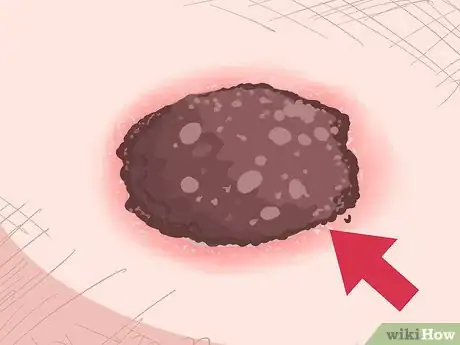
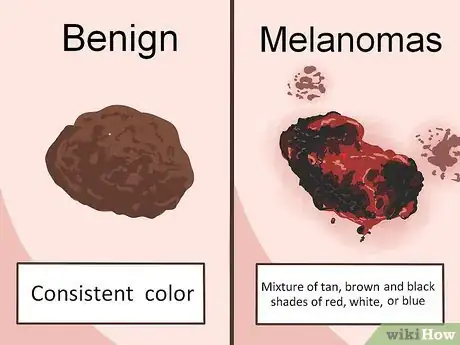
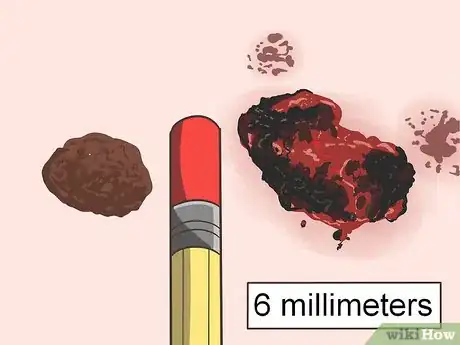
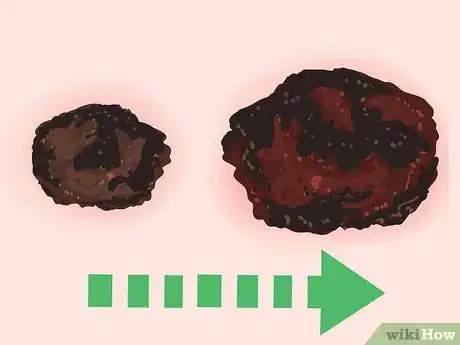

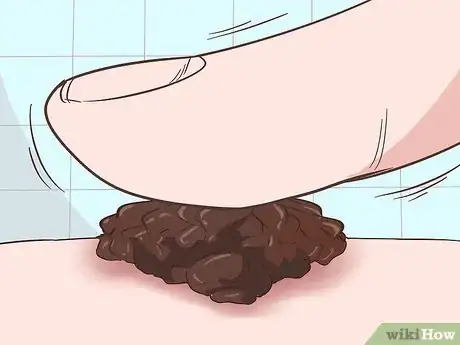
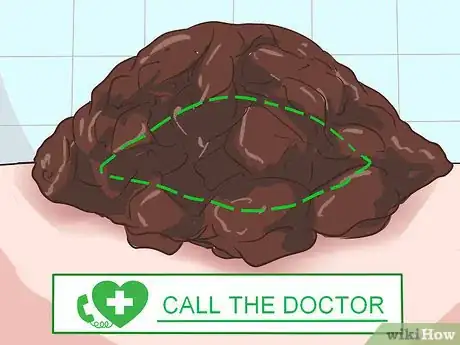

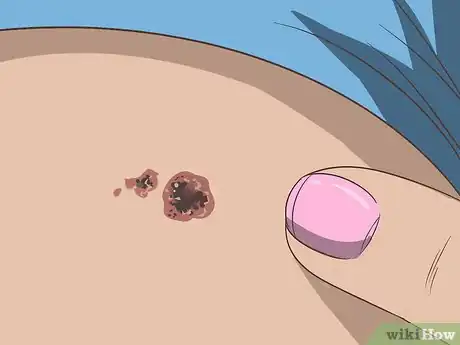
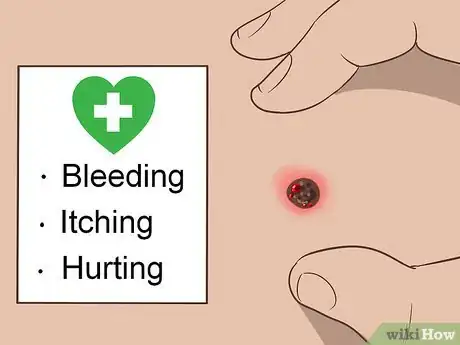

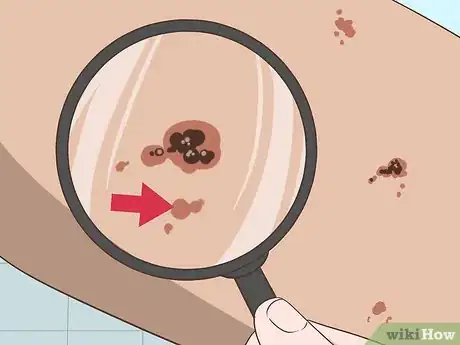

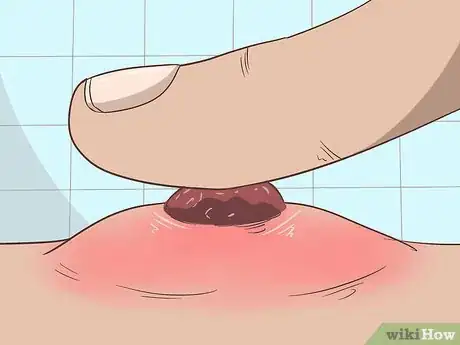
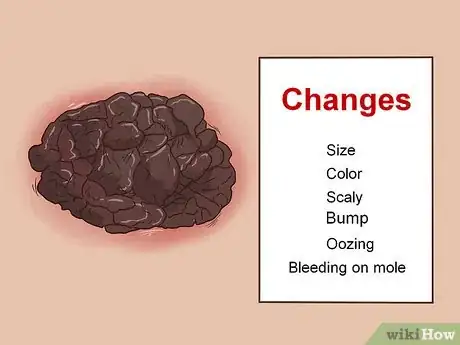






-Step-13.webp)

-Step-8-Version-3.webp)












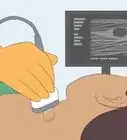






































Medical Disclaimer
The content of this article is not intended to be a substitute for professional medical advice, examination, diagnosis, or treatment. You should always contact your doctor or other qualified healthcare professional before starting, changing, or stopping any kind of health treatment.
Read More...